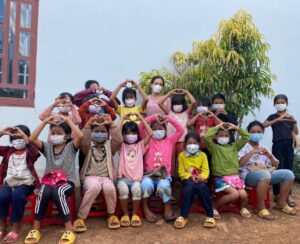Transforming Deaf Education in Vietnam: The QIPEDC Project Success
The Quality Improvement of Primary Education for Deaf Children Project (QIPEDC), funded by the Global Partnership for Results-Based Approaches and administered by the World Bank, has greatly enriched the lives of almost 2,000 deaf children across 20 provinces in Vietnam. Prior to the project’s introduction, the majority of Vietnam’s estimated 116,000 deaf children relied on methods like lip reading and hearing aids for communication. However, with the introduction of a set of 4,000 gestures for communication among deaf children and the deaf community, and a series of 150 video lessons covering math and other subjects for students in grades one through five, these deaf children have been given the opportunity to thrive and communicate through sign language.

Source: World Bank
The Road to Success

The adoption of sign language as the official medium of instruction for deaf children presented its challenges, but the outcomes have been nothing short of extraordinary. Deaf students now enjoy improved connections and communication with one another, which has paved the way for enhanced learning opportunities. Teachers have been equipped with additional resources to better engage and educate deaf students. The project pioneered an inclusive approach by involving parents, caregivers, teachers, deaf mentors, and the wider community in integrating deaf children into both mainstream and special education.
Connecting Communities
The project extended its impact by training almost 400 deaf adults in the use of the new signs, enabling them to provide sign language education to deaf children. This collaborative approach brought deaf children, deaf adults, parents, and teachers together, creating a supportive environment that boosted the children’s confidence in communicating with others.

Stories of Transformation
One such story of transformation is that of Le Thi Huyen, a mother of a deaf child who became a facilitator and sign language interpreter. She pursued a special education degree, becoming a teacher for deaf people, alongside 1,800 other parents who received training under the QIPEDC project. Additionally, 429 teachers underwent training, believing that early sign language instruction would enable deaf children to learn on par with their hearing peers.
The impact of these training programs became evident as many project provinces shared their training materials with other schools, addressing the needs of teachers in specialised and inclusive settings.
Measurable Success
With additional training and the dissemination of educational materials, deaf students in project-supported schools achieved significantly improved test scores, boasting a remarkable 97 percent pass rate in examinations, far exceeding expectations. Students who successfully completed primary education now have expanded horizons, with the possibility of scholarships for further studies, potentially even abroad. The QIPEDC project, delivering both educational and humanitarian benefits, merits consideration for expansion to serve older students. The 4,000 new signs are a promising start, and the Ministry of Education and Training will need to collaborate on future phases to benefit students at other education levels.
Nguyen Kim Ngan’s Success Story
One outstanding example of a student benefiting from the QIPEDC project is Nguyen Kim Ngan, a deaf student at Hanoi’s Xa Dan Primary School. Ngan’s passion for social science and natural science, as well as her enjoyment of playing with friends at school, have all been made possible through the expanded interactions facilitated by sign language.
A Call for Expansion
The success of the QIPEDC project, marked by the improved test scores and the creation of hope for the future, has ignited a call for expanding this approach to serve older students. Nguyen Thi Minh, Vice Minister of the Ministry of Education and Training, emphasises that the 4,000 new signs represent just the beginning of a transformative journey, and collaborative efforts are needed to impact other education levels.

In conclusion, the implementation of sign language in Vietnam’s education system has been an unequivocal success, providing invaluable training and learning resources for teachers and students alike. This inclusive approach has not only enriched the lives of deaf children but also fostered a supportive community, boosting their confidence to communicate and opening doors to diverse learning opportunities. The resounding success of the QIPEDC project underscores the need to expand this approach to reach older students, ushering in even more opportunities for the deaf community.
In Vietnam, Children of the Mekong responds to needs encountered, whether they be social, academic, or economic, mainly through the sponsorship of children. A sponsored child receives monthly support from his sponsor, which allow them to continue their education.
Occasionally, Children of the Mekong also responds to requests for the financing of development programmes, to improve or supplement our activity with impoverished children. These projects aim to improve the living conditions and education of impoverished children, the majority of the time, in addition to the child sponsorship which provides long-term support.
Children of the Mekong does not create its own projects but responds, after assessment, to a local request.

